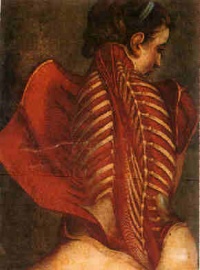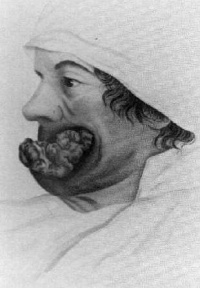Medical illustration
From The Art and Popular Culture Encyclopedia
|
"His anatomical illustrations while they may perhaps be fascinating to the layman…impress the critical observer with their arrogance and charlatanery and do not recommend themselves to the student of anatomy either for their faithfulness or their technique."--History and bibliography of anatomic illustration in its relation to anatomic science and the graphic arts (1921) by Johann Ludwig Choulant and others |
|
Related e |
|
Featured: |
A medical illustrator is a professional artist who interprets and creates visual material to help record and disseminate medical, biological and related knowledge. Medical illustrators not only produce such material but can also function as consultants and administrators within the field of biocommunication. A Certified Medical Illustrator continues to obtain extensive training in medicine, science, and art techniques throughout his or her career.
Medical illustrators create medical illustrations using traditional and digital techniques which can appear in medical textbooks, medical advertisements, professional journals, instructional videotapes and films, animations, computer-assisted learning programs, exhibits, lecture presentations, general magazines and television. Although most medical illustration is designed for print or presentation media, medical illustrators also work in three dimensions, creating anatomical teaching models, patient simulators and facial prosthetics.
List of works
- the Peter Parker (physician) collection[1].
- The monomanies series by Géricault[2]
- The work of Jacques Fabien Gautier d'Agoty
- The work of John Bell[3]
History
Medical illustrations have been made for hundreds (or thousands) of years; many illuminated manuscripts and Arabic scholarly treatises of the medieval period contained illustrations representing various anatomical systems (circulatory, nervous, urogenital), pathologies, or treatment methodologies. Many of these illustrations can look odd to modern eyes, since they reflect early reliance on classical scholarship (especially Galen) rather than direct observation, and the representation of internal structures can be fanciful. An early high-water mark was the 1542 CE publication of Andreas Vesalius's De Humani Corporis Fabrica Libri Septum, which contained more than 600 exquisite woodcut illustrations based on careful observation of human dissection.
Notable medical illustrators include Max Brödel and Dr. Frank H. Netter.
See also



